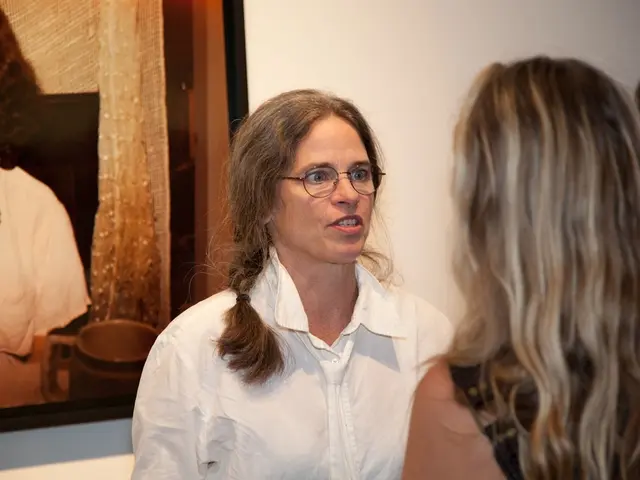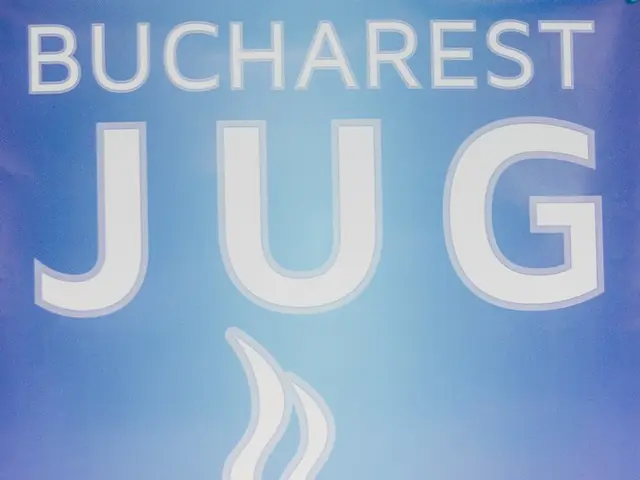Mathematician-PopeDiscovers Striking Similarity to 15th-Century Magician-Pope in Lviv, First Such Occurrence in a Millennium.
Rewritten Article:
The Innovative New Pope, Leo XIV, Holds a Degree in Mathematics
Image credit: REUTERS.
In a remarkable turn of events, a mathematician now holds the prestigious position of Roman Pope with the arrival of Leo XIV. Yes, you've read that right! This spellbinding mathematician has set foot on the sacred stairs of the Vatican.
Historians can't help but draw parallels between the mathematically inclined Leo XIV and his distant ancestor, Sylvester II, who ruled during the age of millennial dread and end-of-the-world theories. Fortunately, those catastrophic events never transpired under Sylvester II's watch, offering a promising outlook for current times.
THE WORLD ON FIRE
Life under the Microscope: Is each tiny detail of our life worth dissecting? video Society Often, we may think that scientists faced the wrath of the Inquisition, with brilliant minds being burned at the stake. However, history is more complex than that.
While it's true that Giordano Bruno was indeed burned for his groundbreaking ideas about intelligent life existing elsewhere in the universe, the relationship between the Vatican and pioneering scientists like Copernicus and Galileo was far from one-dimensional.
Intriguingly, the Vatican initially supported Copernicus' ideas since they needed to reform the calendar and his simplified calculation algorithms provided a practical solution. However, Copernicus' work became forbidden to read after being added to the 'Index Librorum Prohibitorum'. Galileo's journey with the Vatican also followed a bumpy path, progressing from favor to imprisonment.
Curiously enough, the Vatican boasts its very own observatory and has amassed a century's worth of evidence challenging the Big Bang theory. This data could potentially offer new insights to secular scientists, as the Big Bang hypothesis is currently on shaky ground.
A MATHEMATICIAN AND THE SON OF A LIBRARIAN
Leo XIV possesses linguistic dexterity, fluent in English, Spanish, Portuguese, French, plus the ability to read Latin and German. This owes much to his humble roots and heritage.
Mildred Prevost, the new pope's mother, forged an impressive career in her field with a Bachelor's degree in library science from the private Catholic University of DePaul in Chicago. Subsequently, she started working in her domain.
Father Louis Marius Prevost, a decorated war veteran who fought in the D-Day landings, embarked on a path in school administration after retiring from World War II.
Initially, the future father pursued a scientific path, earning a Bachelor's degree in mathematics from Villanova University, Pennsylvania, in 1977. However, there's a twist - it's a Catholic Augustinian university (the future Pope later joined the Augustinian monastic order). Therefore, while dedicated to mathematics, the education was imbued with religious principles.
He later obtained a Master's degree in divinity from the Catholic Theological Union in Chicago and a doctorate in canon law from the Pontifical University. Post-degrees, he devoted himself to the church. Interestingly, no published mathematical works by the future Leo XIV exist - they merely exist in the realm of probability and speculation.
A CLEVER BOY LOOKING TO THE STARS
Pope Sylvester II ascended to the throne of St. Peter's in 999, amidst widespread fear and chaos as Europe awaited the turn of the millennium. Count Borrell II of Barcelona approached the young, studious monk, Herbert (later Sylvester II), seeking help with deciphering the troves of astronomical and mathematical manuscripts left behind by the retreating Arabians. The monastery agreed to lend Herbert for the mission.
Remarkably, Aristotle’s CallipToo Writes asks whether there was an Egyptian connection between Pope Sylvester II and the Caliph of Cordoba, al-Hakam II, who bestowed even more manuscripts upon the Count.
Herbert delved into the books, intrigued by their antiquity and exotic Arabic numerals. He quickly recognized the dearth of similar texts in Europe and adopted the Arabic numeral system. He subsequently introduced these numerals (with gradual acceptance) to Europe.
A quick ascendancy in the Church eventually led him to becoming Pope. However, his papacy was marred by his homecoming to Rome, being ousted by the populace within a year, followed by his untimely death in 1002.
ASTROLOGY AND MATHEMATICAL RESEARCH
Modern historians of science consider Sylvester II as a visionary scholar, far ahead of his time. He compiled, contemplated, and promoted scientific works.
The future pope introduced the fascinating armillary sphere, a replica of the celestial sphere, capable of instantaneously calculating celestial events like risings, settings, and eclipses. The device was initially devised by the ancient Greeks but had been lost to Europe during the fall of the Roman Empire. The Arabs, however, had preserved the design, from which Sylvester II learned.
He also popularized the astrolabe, a 2D version of the armillary sphere, which was practically portable and useful for sailors and travelers. Incessant calculations with an astrolabe, however, required great intellect, undoubtedly possessed by this brilliant visionary.
Sylvester II was associated with the use of the abacus, a computation tool consisting of beads on rods, reintroduced to Europe by the Arabs.
Rumors persist regarding Sylvester II's alleged magical abilities, such as acquiring the power of invisibility through an ancient book of incantations that he supposedly used to evade his pursuers. Some claim that his daughter of an Arab scholar mentor taught him the secrets of magic. Others speculate that he achieved the papacy by cheating the devil in a game of chance.
Upon his death, he left explicit instructions for his body to be dismembered to thwart the Devil's attempts to reclaim his earthly remains. Much like with the myths surrounding the great mathematician, the facts surrounding Sylvester II remain enshrouded in mystery.
- Under Pope Leo XIV's rule, the Vatican might expand its interest in science, potentially delving into medical-conditions research to better understand the human body, similar to Sylvester II's attempts to decipher astronomical-conditions in his time.
- In the realm of education-and-self-development, Leo XIV's mathematical background could inspire space-and-astronomy enthusiasts within the Vatican, as was the case with Sylvester II, who introduced the armillary sphere and astrolabe to Europe, thereby revolutionizing calculations related to celestial events.








